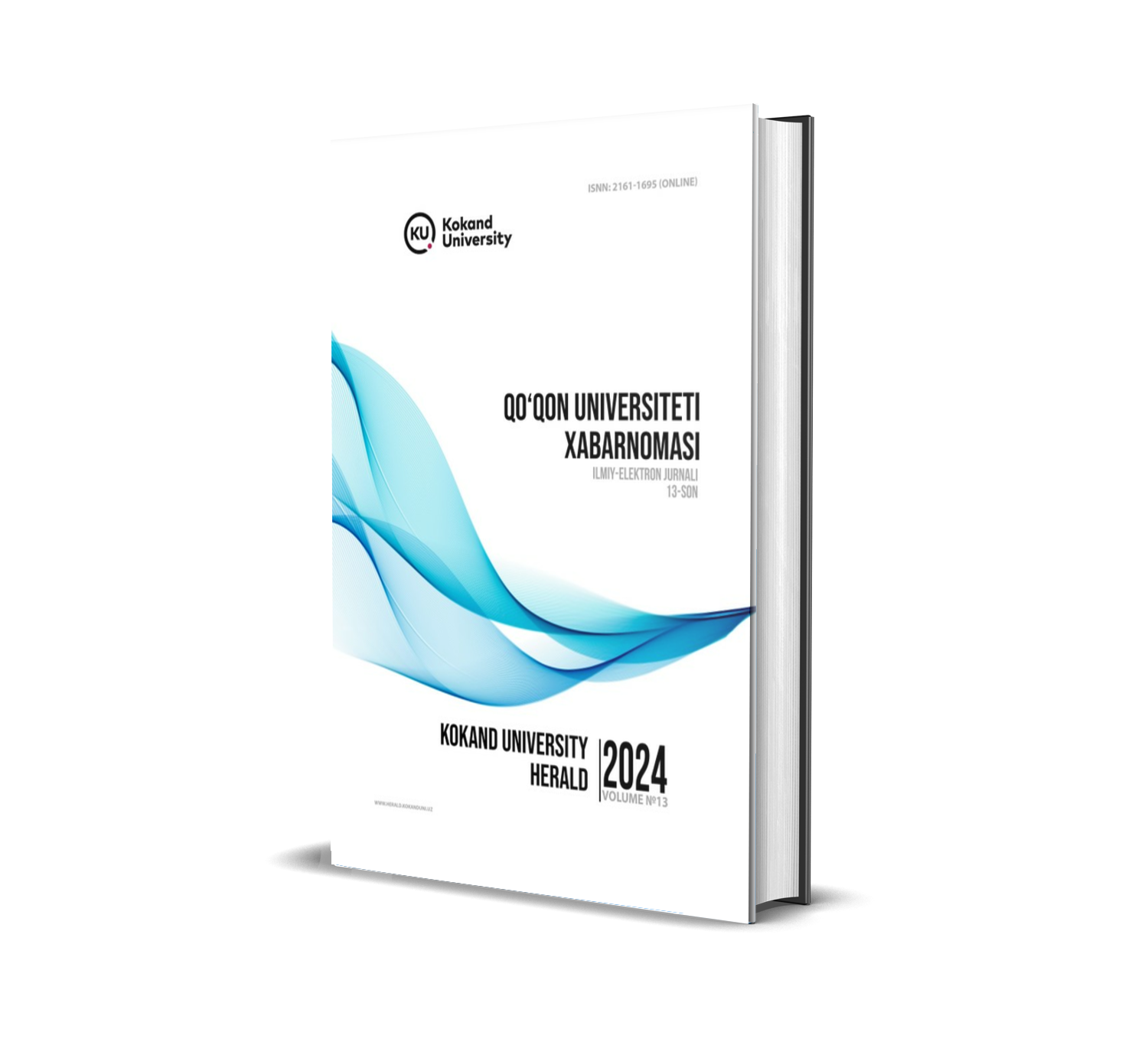ASSESSING THE IMPACT OF INCREASING SMALL BUSINESS COMPETITIVENESS ON ECONOMIC DEVELOPMENT
DOI:
https://doi.org/10.54613/ku.v13i.1037Keywords:
Uzbekistan, SME competitiveness, economic growth, national strategy, product competitiveness, economic development, innovation, assessment methods, market diversification.Abstract
This study examines the role of enhancing small business (SME) competitiveness in fostering economic growth and national integration in Uzbekistan. It highlights the challenges of low competitiveness identified by researchers and international institutions, emphasizing the need for a national strategy. The research discusses various dimensions of competitiveness, from products to national economies, stressing that improving SME competitiveness is critical for regional and national economic stability. Existing assessment methods, such as matrix analyses, are explored, noting their limitations and the necessity for adaptable frameworks that account for diverse factors influencing competitiveness. The study underscores the importance of SMEs in driving innovation, job creation, and market diversification, advocating for a more dynamic and comprehensive approach to competitiveness.
Foydalanilgan adabiyotlar:
Acs, Z., & Audretsch, D. (1990). Innovation and Small Firms. MIT Press.
Becker, G. (1993). Human Capital: A Theoretical and Empirical Analysis with Special Reference to Education. University of Chicago Press.
Brynjolfsson, E., & McAfee, A. (2014). The Second Machine Age: Work, Progress, and Prosperity in a Time of Brilliant Technologies. W.W. Norton & Company.
Elkington, J. (1998). Cannibals with Forks: The Triple Bottom Line of 21st Century Business. New Society Publishers.
Freeman, C., & Soete, L. (1997). The Economics of Industrial Innovation. Routledge.
Levitt, T. (1983). The Globalization of Markets. Harvard Business Review.
North, D. (1990). Institutions, Institutional Change, and Economic Performance. Cambridge University Press.
Porter, M. (1990). The Competitive Advantage of Nations. Free Press.
Stiglitz, J., & Weiss, A. (1981). Credit Rationing in Markets with Imperfect Information. The American Economic Review, 71(3), 393-410.
Storper, M., & Venables, A. (2004). Buzz: Face-to-Face Contact and the Urban Economy. Journal of Economic Geography, 4(4), 351-370.
Melibаevаgulxоn Nаzrullаevnа. (2023). АN ОVERVIEW ОF THE FUNСTIОN ОF HUMАN RESОURСE MАNАGEMENT IN EMPLОYEE PERFОRMАNСE АND MОTIVАTIОN.QO‘QON UNIVERSITETI XABARNOMASI,9(9), 117–12112.
Melibаevа G. (2024). ORGANIZATIONAL BEHAVIOR AND BUSINESS PSYCHOLOGY. QO‘QON UNIVERSITETI XABARNOMASI, 10(10), 48–50. Https://doi.org/10.54613/ku.v10i10.907.Conducting market researchlistening to customer feedbackobserving industry trendscollobrating with customers
4313.A. A. Yusupov. (2024). ANALYSIS OF THE ORGANIZATIONAL MECHANISM OF EFFECTIVE USE OF HUMAN RESOURCES IN SMALL BUSINESS SUBJECTS IN UZBEKISTAN. European Journal of Economics, Finance and Business Development, 2(5), 70–73. Retrieved from https://europeanscience.org/index.php/2/article/view/63014.
Rasulov Hamidjon Yakubovich, & Аbdumаnnonov Rizobek Iqboljon o‘g’li. (2024). EKSKURSIYАFАOLIYАTI UCHUN MUTАXАSSISLАR TАYYORLАSHNING ZАMONАVIY MUАMMOLАRI VАISTIQBOLLI TENDENSIYАLАRI. Kokand University Research Base, 884–888. Retrieved from https://scholar.kokanduni.uz/index.php/rb/article/view/246
Downloads
Published
Iqtiboslik olish
Issue
Section
License
Copyright (c) 2025 QO‘QON UNIVERSITETI XABARNOMASI

This work is licensed under a Creative Commons Attribution 4.0 International License.

